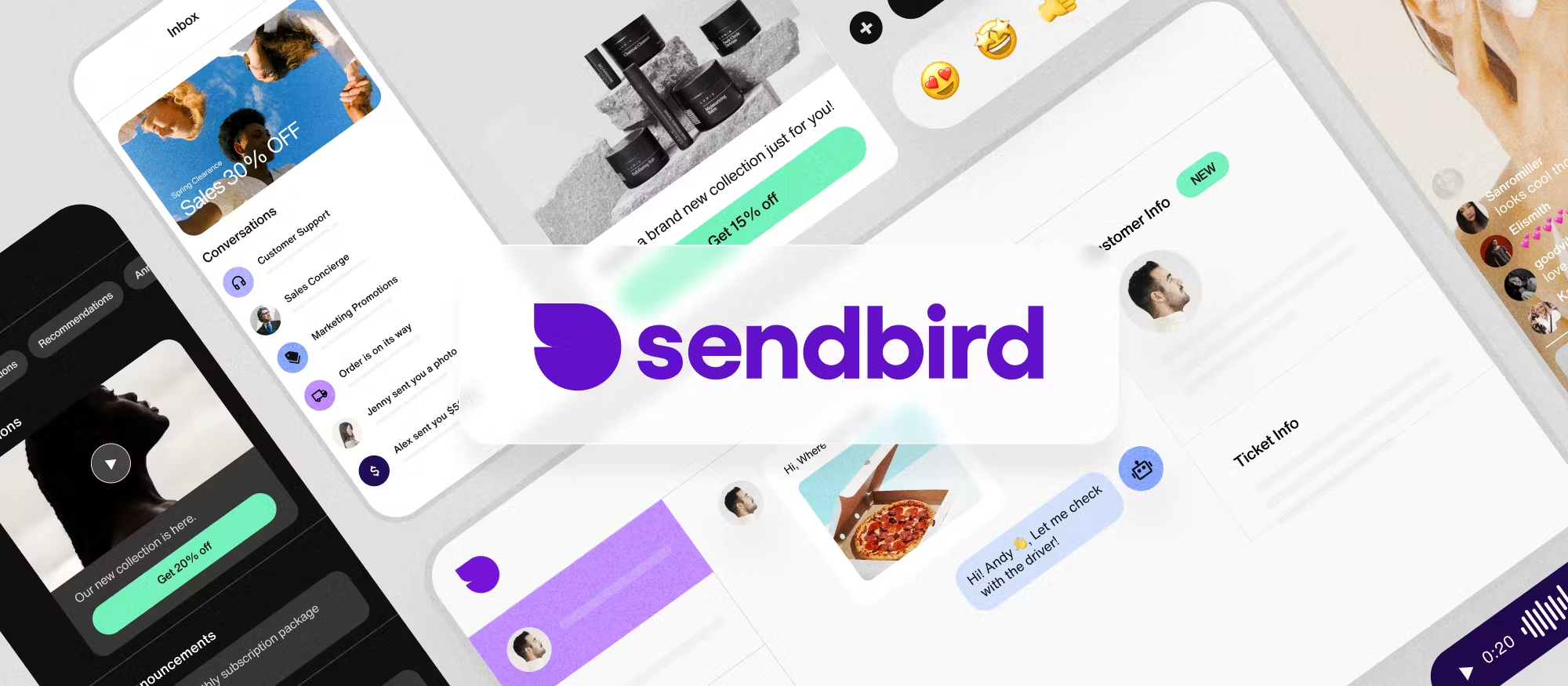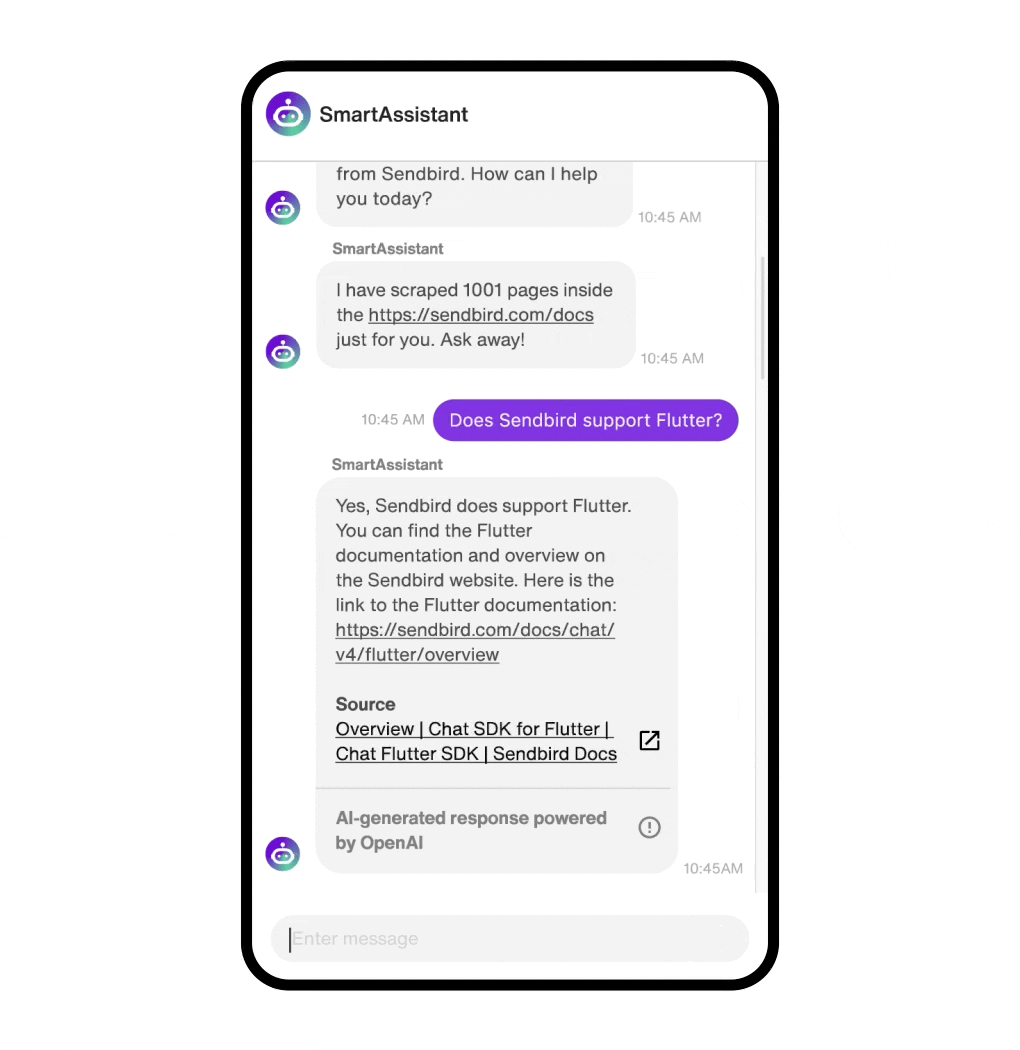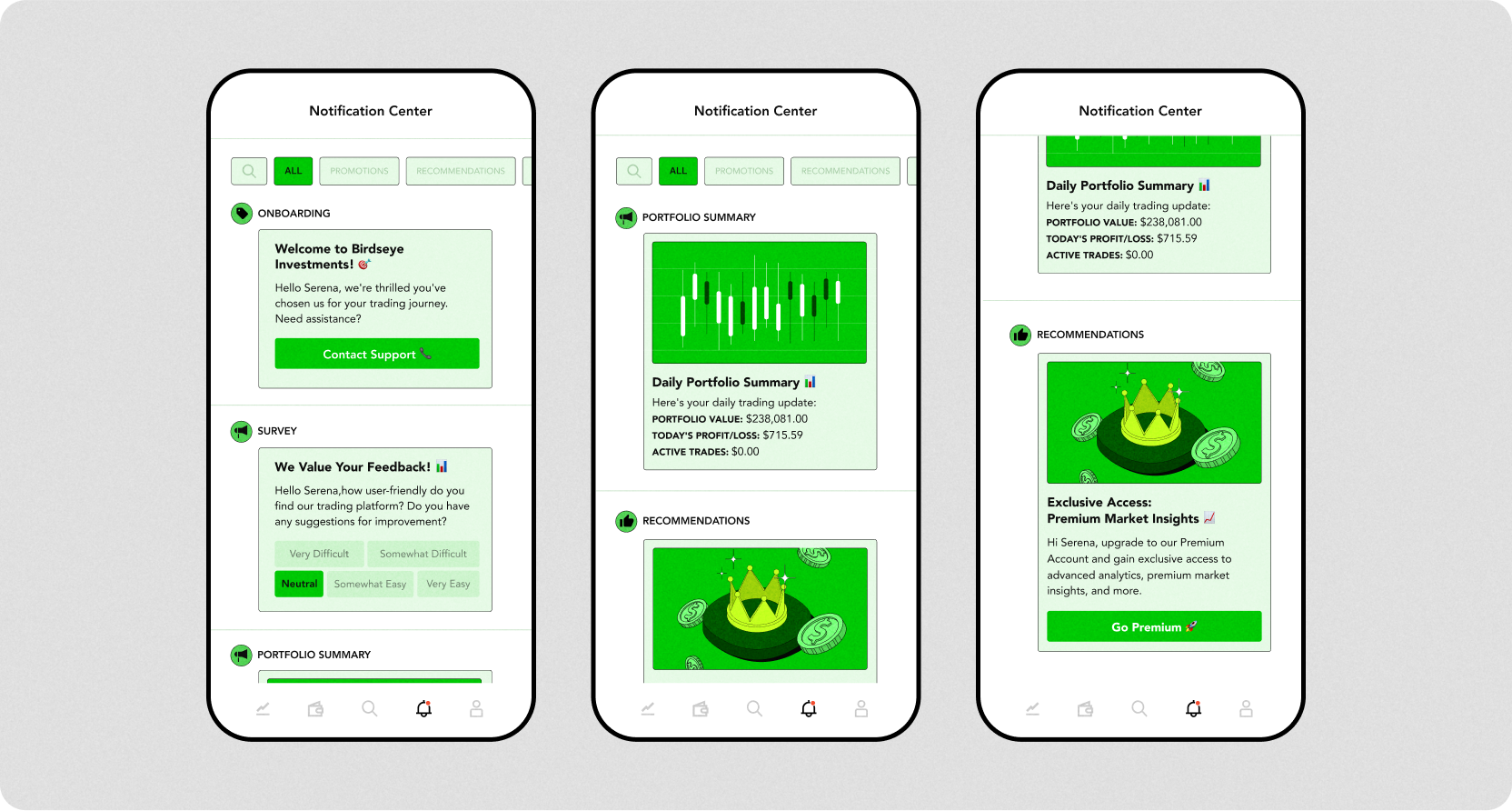In-app messaging vs. in-app chat: Which to choose in 2024

In-app messaging vs. in-app chat: Setting the stage
In the bustling world of mobile applications, two distinct paths of user engagement emerge: in-app messaging and in-app chat. They might look like twins on the surface, indistinguishable in their digital cradle, but think again.
One strategy boasts the power to skyrocket app engagement, conversion, and app launches, while the other brings a human touch to the user experience, driving emotional connections and user loyalty.
So why the mix-up? Why do these two get swapped in conversation as quickly as hats at a party? In this blog, we're setting the record straight, pulling apart the threads that tangle in-app messaging with in-app chat. The two strategies have evolved with the introduction of conversational AI and in-app notifications and offer new potential horizons for 2024 and beyond.
Let’s unravel the essence of each, unpacking the truth behind the confusion.
What is in-app chat?
In-app chat refers to a communication feature embedded within a digital application that enables real-time or near-real-time messaging between users or between users and service providers. This feature is designed to facilitate direct interaction within the context of the application's environment, without necessitating the use of external messaging platforms or services.
In-app chat serves as a direct line between users or between users and a brand. It’s a bit like having your own WhatsApp in your app. Ever used DoorDash or Hinge? DoorDash uses in-app chat to connect drivers and customers or customers with their support team, while Hinge connects app users who want to have a conversation. DoorDash implemented chat to allow drivers and customers to resolve most issues and reduce the need for support. Meanwhile, Hinge ensured that users can connect in real-time or asynchronously when convenient.
Types of businesses using in-app chat and examples
In-app chat is real-time and leverages the convenience of text. In-app chat, therefore, is ideal for 3 types of digital businesses:
Online communities that connect members with each other, such as Patreon, Meetup, dating apps, and fintech payment apps such as Paytm.
2-sided networks, like marketplaces, which have buyers and sellers who need to interact with each other. Carousell, a Singaporean marketplace, implements in-app chat to increase transaction velocity.
Businesses with support staff that use in-app chat for customer service. Virgin Mobile UAE entirely digitized its business, including customer service.
According to Statista, in-app chat is the simplest way to converse with a support agent. This real-time interaction resolves issues and personalizes the user experience, fostering a connection that static content cannot achieve.
Pros and cons of in-app chat
Pros of in-app chat
Engaging real-time conversations
Asynchronous and persistent messaging. Users control their communication schedule.
Personalized support
Enhanced user satisfaction for support (CSAT)
Cons of in-app chat
Requires two or more engaged individuals
Resource-intensive for businesses
Can be overwhelming due to high user volume

Elevate in-app engagement eBook
The in-app chat game changer: Conversational AI chatbots!

The arrival of Large Language Models (LLMs) like GPT from OpenAI has revolutionized in-app chat, making real-time, intelligent conversations possible without another human. These AI chatbots deliver 24/7 AI customer support, AI candidate screening, AI prospect qualification, AI marketing, and AI sales, transforming customer service and engagement. They understand context, respond with human-like intuition, and automate routine tasks, freeing up human creativity for more complex challenges. This innovation marks a new era in digital communication, where conversational AI chatbots are not just tools but essential, dynamic participants in enhancing user experience and operational efficiency at a much lower cost.
What's in-app messaging?
In-app messaging is the app's or brand's way of speaking directly to you, the user. These messages might nudge you towards unexplored features, offer timely promotions, or guide you through the app's functionality. Unlike the bi-directional nature of in-app chat, in-app messaging is one way to enrich your app journey, requiring an action rather than a direct response.
The new kid on the block of in-app messaging: In-app notifications

A new wave of app messaging is gaining prominence, born from the evolution of in-app messaging. As more brands seek to engage directly within apps, in-app notifications have emerged as a critical communication tool. These are one-way messages from brands to users, serving various purposes.
For instance, an on-demand service company like Uber Eats notifies users when their order is en route. Fintech companies like PicPay or PayPay, alert users about transactions, e-commerce platforms like Poshmark might send coupons for sales, and healthcare providers, remind patients of appointments.
The rising popularity of in-app notifications stems from several advantages:
They operate within a branded, secure environment, reducing the risk of fraud compared to email and SMS.
Unlike the clutter of SMS and email, these notifications are often delivered as a feed in the app, ensuring they don't get lost in the noise.
They're persistent, allowing users to read them at their convenience.
They offer consumer insights at the individual level.
They are cost-effective, and often prioritized over SMS, which has become a fallback delivery method.
In-app notification data are also at the fingertips of your developer to connect them with your CRM, customer database, and analytics tools to create savvy workflows that will improve operations and customer satisfaction.
Pros and cons of in-app messaging
Pros of in-app messaging
Efficient at scale
Hyper-personalized
Engagement and conversion rates
Growth
Programmability & automation
Cons of in-app messaging
Risk of being perceived as intrusive
Mastery of relevance and timing is essential to avoid being seen as merely bothersome.
Differences between in-app chat vs. in-app messaging
The main divergence lies in their interaction style and intent. In-app chat is a two-way street, facilitating a dialogue between user and provider. It's about addressing specific user needs and queries. In-app messaging, however, is a one-way communication channel where the app or the brand initiates contact with the user to enhance engagement, educate, or promote content. AI chatbots, however, are blurring the lines. They can engage in a dialogue autonomously and be triggered by either the user's behavior or their request for help. With the rise of generative AI, conversational AI chatbots are highly considered for product-led growth, helping with onboarding, engagement, and the overall user experience.
Which type of mobile messaging should you use?
The choice hinges on your app's nature and objectives. If personalized support and direct interaction are paramount, in-app chat is indispensable, and the excellent news for you is that the barrier of entry has been lowered with the rise of LLM-powered AI chatbots. For brand engagement and guiding user behavior, in-app messaging shines. In-app notification is also a new channel to consider to improve your SMS cost and performance.
While both tools are vital in the app ecosystem, in-app messaging stands out for its ability to drive user engagement at scale. It's a powerful ally in keeping your app's value front and center, encouraging continued use and discovery.
However, blending in-app messaging and in-app chat can create a holistic communication framework, ensuring users stay engaged and feel supported throughout their app experience.
If you are looking for customer engagement solutions, explore Sendbird, the all-in-one communication platform for web & mobile apps offering in-app messaging, chat, AI chatbots, and voice and video APIs — tailored for sales, marketing, operations, and customer service. Dive into our communication platform today and start a free trial.










